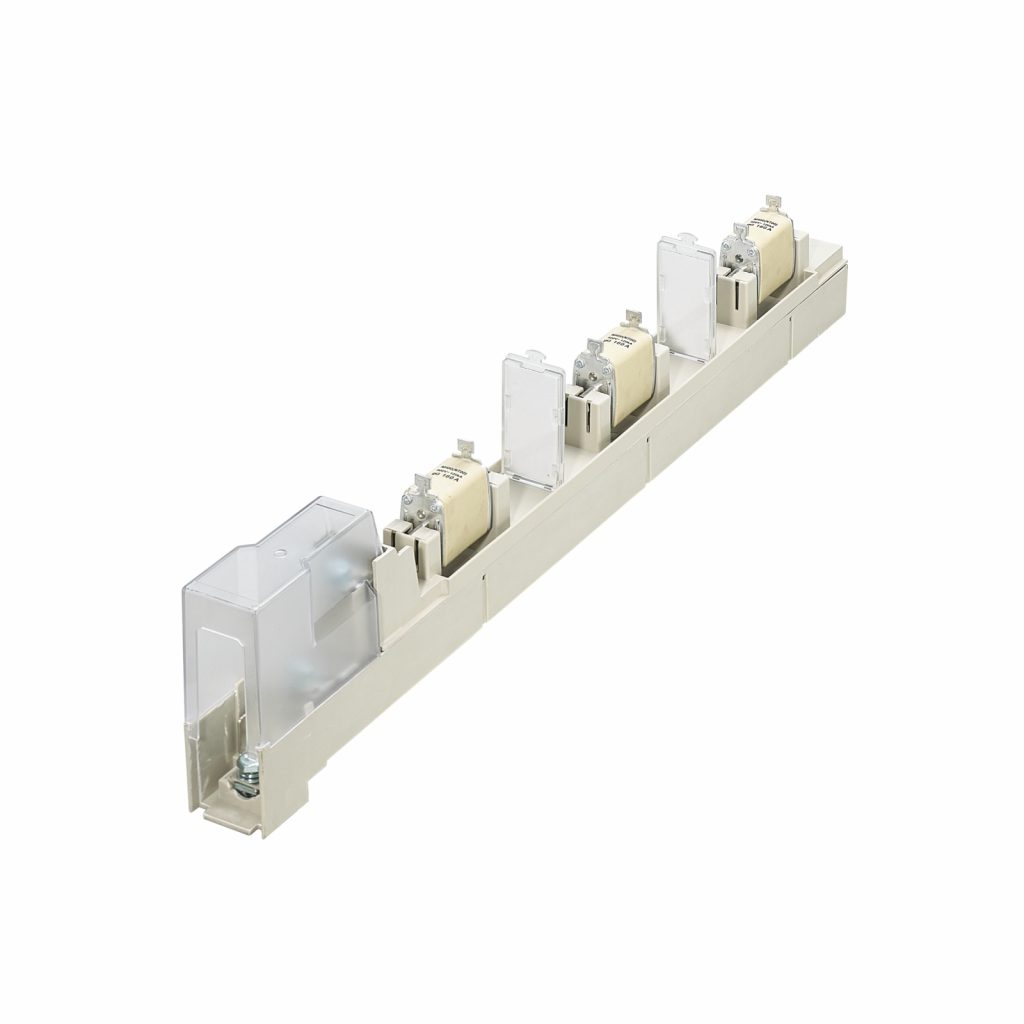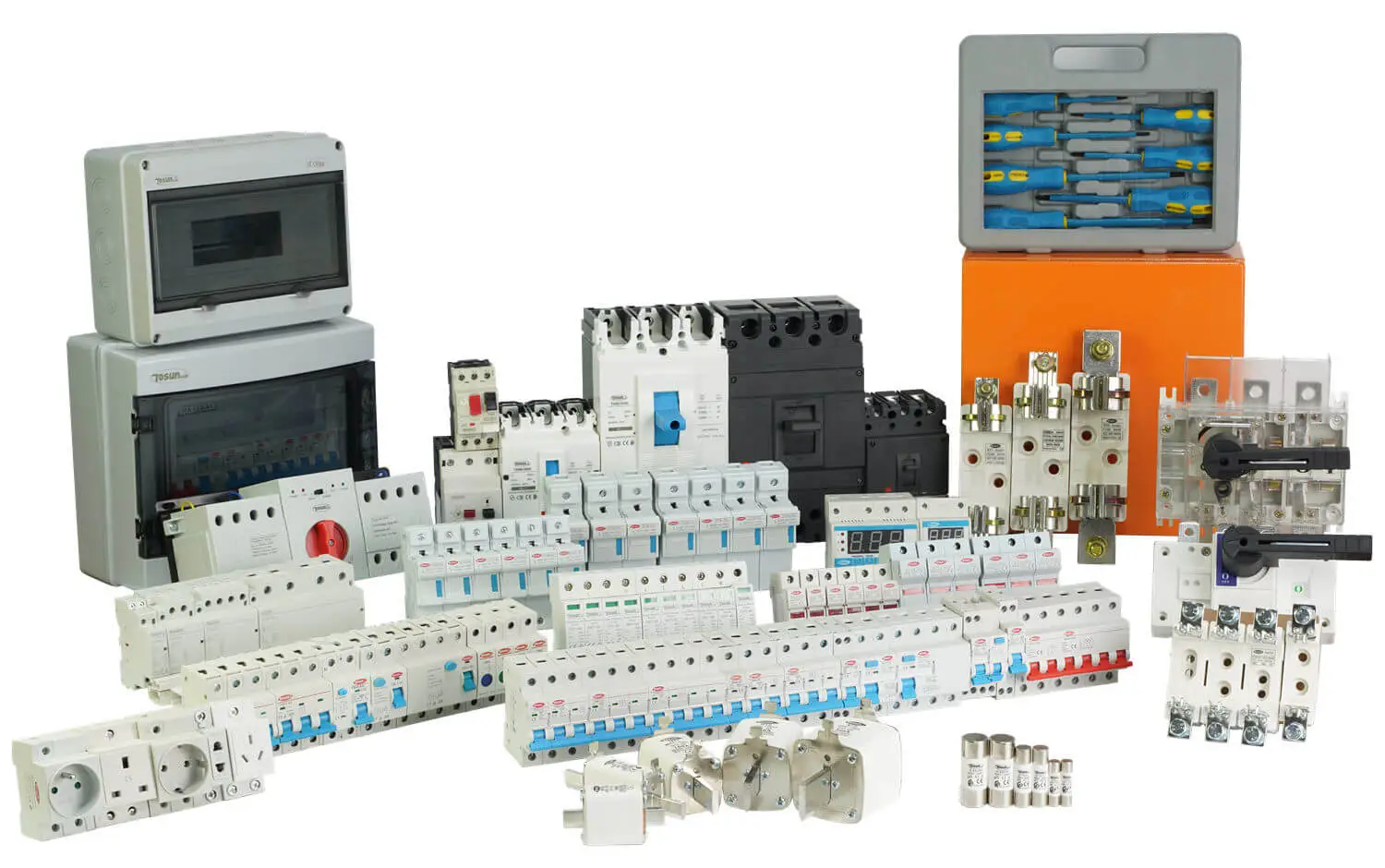What is a Fuse Switch Disconnector?
Table of Contents
ToggleFuse switch disconnectors meld key electrical safety and control functions – fusing, switching, and isolating – in a single robust package. They first limit overloads, then allow physically separating circuits for maintenance while ensuring de-energization. This unique flexibility makes them ubiquitous in higher-current applications.
- Combine overcurrent protection and isolation
- Allow safe circuit access for maintenance
- Use removable fuses for overload protection
- Available from 30 to 6000 amps
Serving as a critical first line of defense, fuse switch disconnectors combine overcurrent protection and lockable isolation in a single body. This allows safely shielding equipment while also defending supply lines from large surges. Their versatility makes fuse switches essential components for commercial and industrial sites.
Fuse Switch Disconnectors: An Overview
A fuse switch disconnector consists of a standard safety switch integrated with a fuse holder that accepts removable cartridge or blade fuses. This allows installing suitable fuse types and ratings to protect various supply lines and connected equipment.
Fuse switch bodies are also lockable in the off position for assured personal safety during maintenance. The fused disconnect switch segments and de-energizes downstream circuits while the remaining fuses avert risky re-energization faults until ready.
Working Principle
The fuse link serves as the overcurrent sensing element, melting when amperage limits are exceeded for sufficient time. This safely interrupts faulty currents while allowing harmless inrush and motor startup surges. Replaceable fuse links, then restore protection following faults.
The switch mechanism isolates and de-energizes downstream equipment, facilitating safe access for maintenance and modifications. The switch also ensures the line remains de-energized if fuses are removed or fail.
Interlocks prevent opening fuse access doors until switches are confirmed off. The fully enclosed body then shields against accidental contact with live internal components. This total package makes fuse switches invaluable multifunction protectors.
Advantages and Disadvantages
Fuse switch disconnectors offer significant benefits but also have minor downsides to consider.
Advantages:
- Overcurrent protection with a visible indication
- Total circuit isolation for maintenance
- Flexible fuse sizing for precise protection
- Rugged, sealed construction for longevity
- Lockout compliant for securing hazardous circuits
Disadvantages:
- Larger than stand-alone switches or fuses
- Not automated like circuit breakers
- Higher cost than basic components
While slightly more expensive, fuse switches outperform combining separate switches, fuses, and lockout devices. All-in-one construction shrinks footprints, while the fused design prevents remote reactivation accidents.
Related Reading: Fused Disconnect Switch vs Circuit Breaker
How Fuse Switch Disconnectors Are Used
With flexibility, robustness, and advanced protection capabilities, fuse switch disconnectors reliably serve across a wide range of industrial and commercial electrical installations.
- Motor Branch Circuit Protection
Fuse switches allow properly sizing fuses to match motor nameplate current for controlled starting and overload protection. Lockable disconnect function facilitates equipment isolation for maintenance.
- HVAC Equipment Control and Protection
Heating, ventilation, and air conditioning systems gain vital fused protection against shorts while also isolating condenser units or ventilation machinery for service using lockout-compliant switches.
- Pump and Compressor Safety Switches
Mission-critical pumping and compressed air systems demand both overload stops to prevent burning up valuable equipment and full-power isolation abilities for routine maintenance like lubrication tasks or hose replacement.
- Control Panel Supply Protection
Safeguarding control panel inputs from damaging backfeeds or voltage spikes prevents costly control electronics damage. Fuse switches also simplify cutting overall panel power for modifications.
- Lighting Branch Circuit Disconnects
From street lighting to warehouses, properly rated lighting fuse switches allow protecting long circuit runs while also providing maintenance teams safe, de-energized luminaire access.
- Generator and Inverter Protection
Protecting any power source from overload faults prevents extensive repairs down the line. Generator or inverter fuse switches also facilitate safe testing and connectivity work on associated transfer switchgear.
Types of Fuse Switch Disconnectors
Fuse switches come in a range of configurations and fuse types to suit different protection needs.
- Enclosed vs Open Designs
Modern enclosed safety switches fully seal internal components from inadvertent contact or environmental debris. Open designs partially expose live parts during operation, requiring caution.
- Blade vs Cartridge Fuses
Blade type fuses feature open wire filaments protected within a fiber tube that slides into clips. Cartridge fuses fully encapsulate the fuse link, needing replacement rather than refilling if tripped. Cartridges resist moisture better in humid environments.
- Single vs Double Break
Double break switches interrupt current in two places – the fuse and an added switch contact gap. This allows isolating even high-capacity fuses for secure maintenance isolation. Single break models just open the fuse portion’s current path under load.
Related Reading: How to Select Fuse Switch Disconnectors?
Fuse Switch Disconnector Features
Here are a few features of fuse switch disconnectors:
- Robust Construction
Heavy duty fuse switch disconnectors feature reinforced thermoplastic or metal clad enclosures surrounding air insulated bus bars. High withstand ratings and sturdy components allow controlling substantial loads.
- Drawout Design
Some large capacity fuse switches allow easily sliding out or “racking” the fuse assembly for inspection without fully disconnecting wiring. This facilitates maintenance while retaining overcurrent stops if re-inserted.
- Visible Blades
Switchblades clearly extend or retract outside the housing when opened or closed. This confirms operational status at a glance along with padlockable mechanisms.
- Modular Expandability
Fuse switch enclosures often support installing multiple switchways in parallel. This allows incrementally expanding protection as capacity needs grow using modular designs.
From compact 30-amp units to high-capacity 600-amp models, fuse switch disconnectors scale to match wide-ranging demands. Their flexible fusion of key functions merits placement in myriad commercial and industrial electrical systems.
Related Reading: How to Install and Maintain Fuse Switch Disconnectors
Conclusion
Fuse switch disconnectors neatly package essential isolation, de-energization, and overload protection into a single body. This powerful combination has secured electrical distribution systems for decades.
With routine maintenance accessibility built right in, heavy-duty fuse switches keep both personnel and equipment out of harm’s way across countless industrial applications. They remain the go-to solutions whenever flexible fused control is a must.
For expert specification of optimal fuse switch disconnectors matched to your specific electrical system needs, TOSUNlux offers personalized consultation and cost-effective supply. Contact our specialists today to protect your property and processes.
Tel: +86-577-88671000
E-mail: ceo@tosun.com
Skype: tosunelectric
Wechat: +86-139 6881 9286
WhatsApp: +86-139 0587 7291
Address: Room No.1001 Wenzhou Fortune Center,Station Road, Wenzhou, China
REQUEST A QUOTE
WhatsApp us
 : +86-139 0587 7291
: +86-139 0587 7291 English
English Español
Español Русский
Русский Français
Français العربية
العربية Português do Brasil
Português do Brasil Українська
Українська Türkçe
Türkçe Polski
Polski Nederlands
Nederlands Italiano
Italiano Bahasa Indonesia
Bahasa Indonesia हिन्दी
हिन्दी اردو
اردو አማርኛ
አማርኛ Հայերեն
Հայերեն ไทย
ไทย Монгол
Монгол فارسی
فارسی Shqip
Shqip Ελληνικά
Ελληνικά



